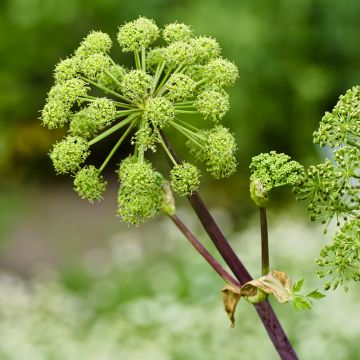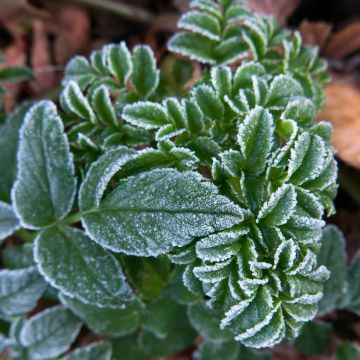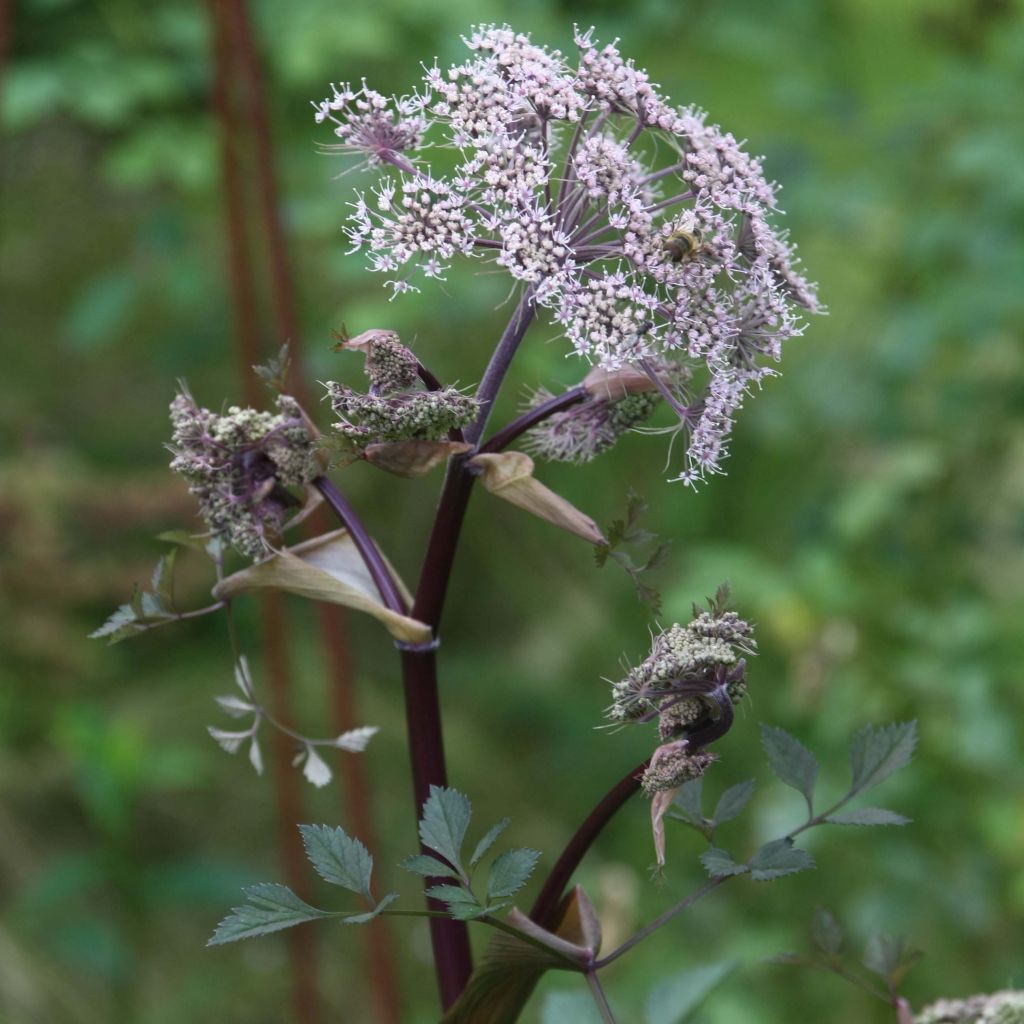

Angelica sylvestris Vicars Mead
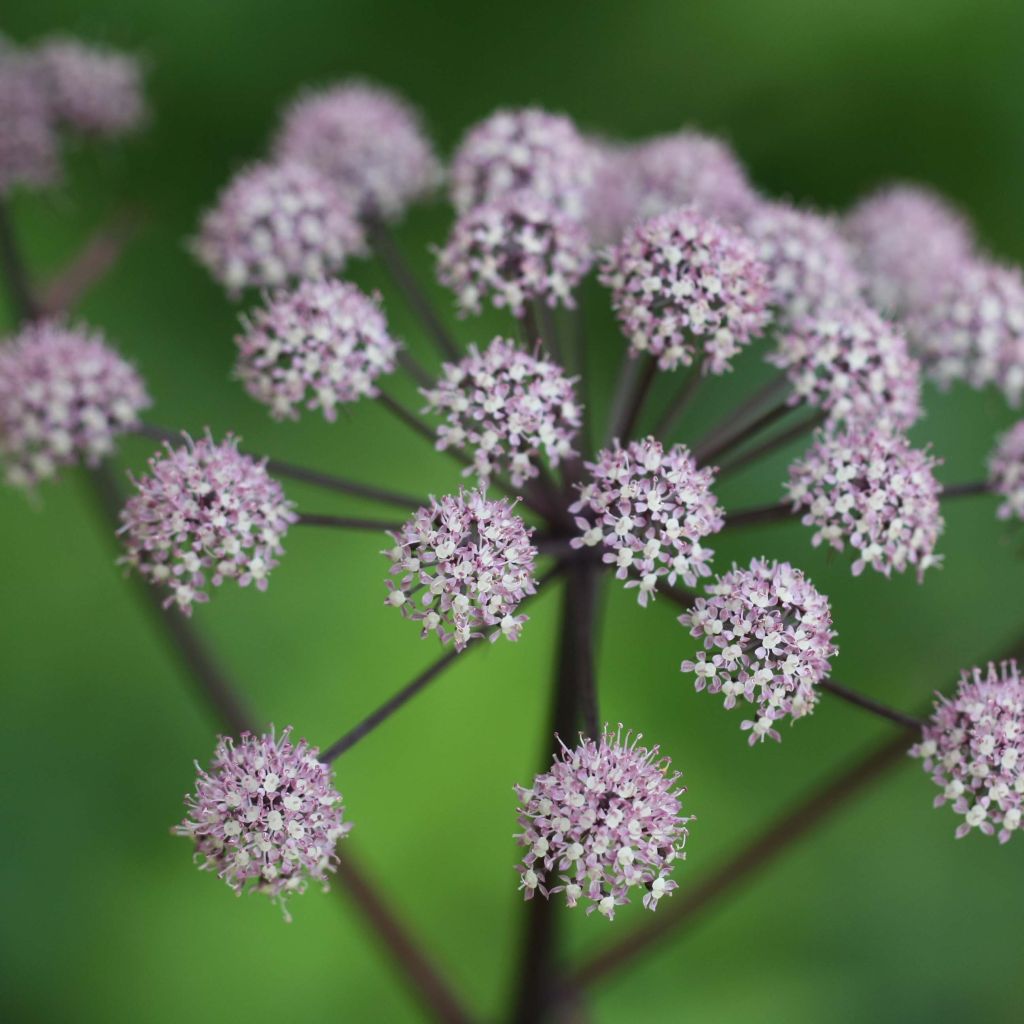

Angelica sylvestris Vicars Mead
Angelica sylvestris Vicars Mead
Angelica sylvestris Vicar's Mead
Wild angelica
This item cannot be shipped to the selected country
Delivery charge from €6.90
More information
Delivery charge from €6.90
More information
Schedule delivery date,
and select date in basket
This plant carries a 12 months recovery warranty
More information
We guarantee the quality of our plants for a full growing cycle, and will replace at our expense any plant that fails to recover under normal climatic and planting conditions.
From €7.90 for pickup delivery and €6.90 for home delivery
Express home delivery from €8.90.
Does this plant fit my garden?
Set up your Plantfit profile →
Description
Angelica sylvestris 'Vicar's Mead' is a charming biennial or short-lived perennial with a wild allure. From summer to early autumn, it produces spectacular deep pink umbels, borne atop erect purple stems. The abundant, finely cut foliage, also dark green to purple, adds to the lightness and wild grace of this carefree plant. It prefers moist, well-drained soil, even clayey, in full sun or partial shade, and will easily self-seed without becoming invasive.
Angelica sylvestris 'Vicar's Mead' belongs to the complex Apiaceae family (formerly known as Umbelliferae). The wild species, also known as meadow angelica or wood angelica, is a short-lived biennial or perennial that can be found throughout Europe and as far as Siberia. It grows in cool to wet meadows, as well as on the edges of woods and along streams or ponds. In the first year, the plant produces a rosette of large, spreading leaves, each reaching up to 50cm (20in), divided into multiple ovate and pointed leaflets, which are slightly toothed. Between July and September of the second year, the plant sends up a tall, sturdy flowering stem, reaching 1.2 to 1.5m (4 to 5ft). It bears typical umbels of the Apiaceae family (resembling a giant carrot) with small flowers consisting of 5 petals. When dried, the stems remain decorative for several weeks, sometimes throughout winter if the climate is not too harsh.
In the 'Vicar's Mead' variety, all parts are beautifully coloured: the leaves range from dark green to rich chocolate purple, the flower stalks are purplish, and the flowers are purple in bud and turn pink when fully open. A stunning combination that is sure to catch the eye!
Angelica sylvestris 'Vicar's Mead' is a plant with a wild charm. It is very hardy (tolerating temperatures below -20°C (-4°F)) and robust. It thrives in fairly humus-rich, moist to wet soils. Heavy and clayey soils are not a problem as long as they are well-drained. While it tolerates shade, this variety will display its colours best in mild sun or light shade. Although it is a biennial and therefore dies after 2 (sometimes 3) years, it easily self-sows in the garden. Remember to leave some dried stems to perpetuate the variety. The plant self-seeds more or less faithfully: you are free to select among the descendants those that you like the most (very dark foliage or greener) to eventually obtain a well-homogeneous population after a few years.
Pair 'Vicar's Mead' in a partial shade border with pale-flowering plants to enhance its brilliance: for example, 'Ivorine' Monkshood, 'Snow Queen' Columbine, or Goat's Beard (Aruncus dioicus). You can also try Chinese Corydalis with its bright blue flowers, which go perfectly with the purple leaves. As for shrubs, the abundant blooms of Vanhoutte Spirea will make a superb backdrop.
Angelica sylvestris Vicars Mead in pictures
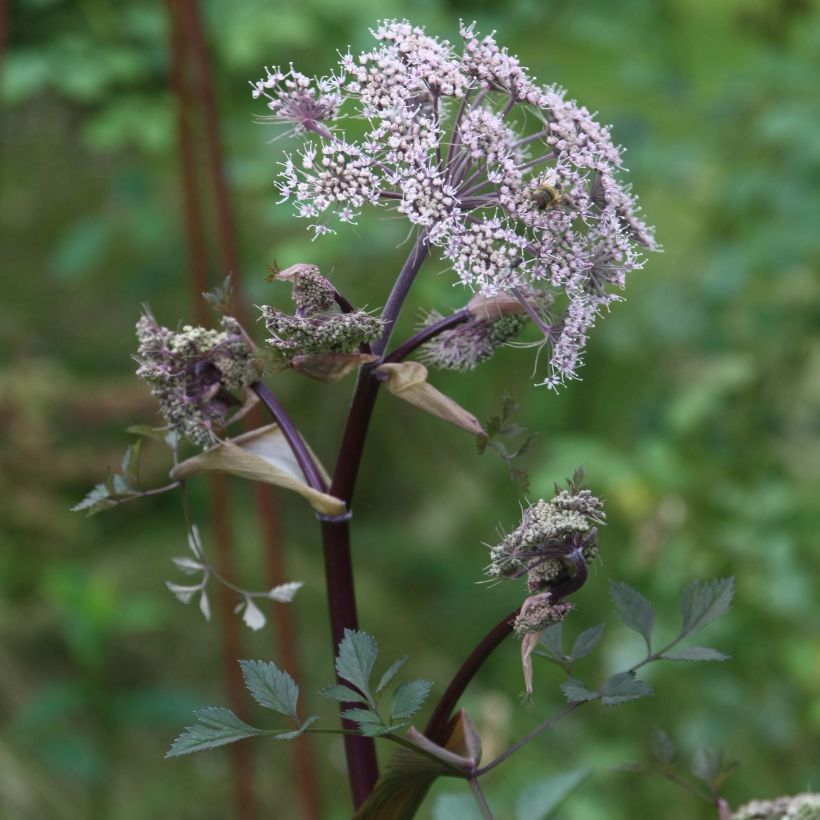

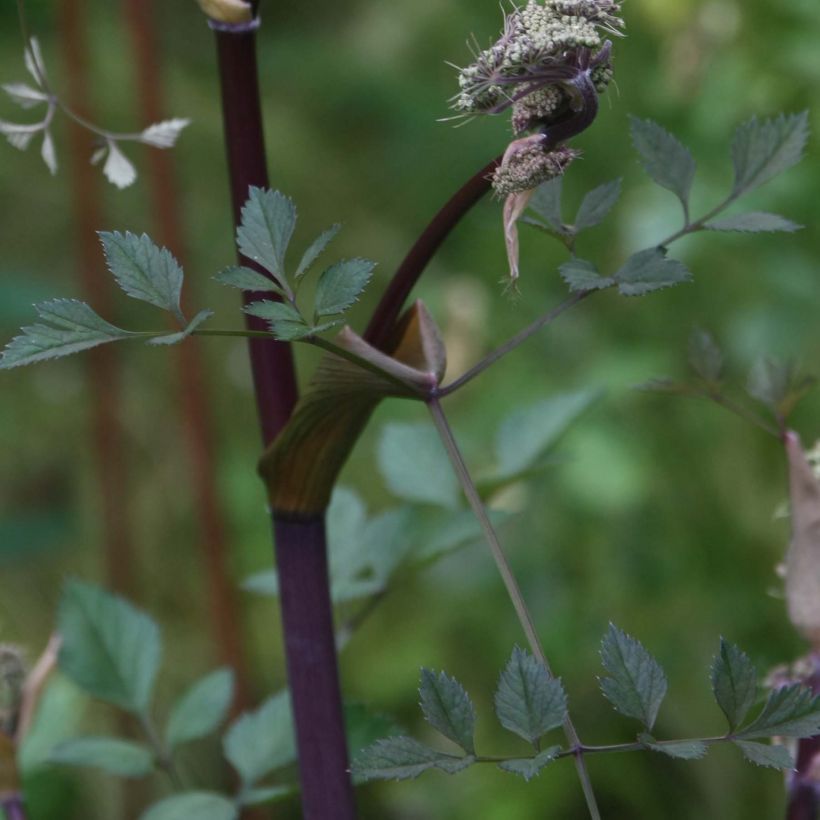

Flowering
Foliage
Plant habit
Safety measures
Botanical data
Angelica
sylvestris
Vicar's Mead
Apiaceae
Wild angelica
Western Europe
Phytophotodermatoses
Cette plante peut provoquer l'apparition de réactions cutanées indésirables en cas de contact suivi d'une exposition au soleil.
Ne la plantez pas là où de jeunes enfants peuvent évoluer. Evitez l'exposition au soleil après l'avoir manipulée. Evitez tout contact avec la peau: privilégiez l'emploi de gants pour la manipuler. En cas de contact, lavez-vous soigneusement les mains et rincez abondamment à l'eau la zone concernée. Lavez les vêtements entrés en contact. En cas de réaction cutanée, contactez votre médecin ou le centre antipoison le plus proche de chez vous. En cas d'atteinte étendue, appelez sans tarder le 15 ou le 112.Pensez à conserver l'étiquette de la plante, à la photographier ou à noter son nom, afin de faciliter le travail des professionnels de santé.
Davantage d'informations sur https://plantes-risque.info
Other Angelica
View all →Planting and care
Plant in light and moist soil. Tolerates non-compact clay soils very well.
Planting period
Intended location
Care
-
, onOrder confirmed
Reply from on Promesse de fleurs
Haven't found what you were looking for?
Hardiness is the lowest winter temperature a plant can endure without suffering serious damage or even dying. However, hardiness is affected by location (a sheltered area, such as a patio), protection (winter cover) and soil type (hardiness is improved by well-drained soil).

Photo Sharing Terms & Conditions
In order to encourage gardeners to interact and share their experiences, Promesse de fleurs offers various media enabling content to be uploaded onto its Site - in particular via the ‘Photo sharing’ module.
The User agrees to refrain from:
- Posting any content that is illegal, prejudicial, insulting, racist, inciteful to hatred, revisionist, contrary to public decency, that infringes on privacy or on the privacy rights of third parties, in particular the publicity rights of persons and goods, intellectual property rights, or the right to privacy.
- Submitting content on behalf of a third party;
- Impersonate the identity of a third party and/or publish any personal information about a third party;
In general, the User undertakes to refrain from any unethical behaviour.
All Content (in particular text, comments, files, images, photos, videos, creative works, etc.), which may be subject to property or intellectual property rights, image or other private rights, shall remain the property of the User, subject to the limited rights granted by the terms of the licence granted by Promesse de fleurs as stated below. Users are at liberty to publish or not to publish such Content on the Site, notably via the ‘Photo Sharing’ facility, and accept that this Content shall be made public and freely accessible, notably on the Internet.
Users further acknowledge, undertake to have ,and guarantee that they hold all necessary rights and permissions to publish such material on the Site, in particular with regard to the legislation in force pertaining to any privacy, property, intellectual property, image, or contractual rights, or rights of any other nature. By publishing such Content on the Site, Users acknowledge accepting full liability as publishers of the Content within the meaning of the law, and grant Promesse de fleurs, free of charge, an inclusive, worldwide licence for the said Content for the entire duration of its publication, including all reproduction, representation, up/downloading, displaying, performing, transmission, and storage rights.
Users also grant permission for their name to be linked to the Content and accept that this link may not always be made available.
By engaging in posting material, Users consent to their Content becoming automatically accessible on the Internet, in particular on other sites and/or blogs and/or web pages of the Promesse de fleurs site, including in particular social pages and the Promesse de fleurs catalogue.
Users may secure the removal of entrusted content free of charge by issuing a simple request via our contact form.

































